If you’re looking for a proven way to boost traffic and increase conversions, then you need a video marketing strategy.
Globally, 92.3% of internet users aged 16-64 watch online video content at least once a week, according to an extensive report from We Are Social and Meltwater. If you’re not promoting your brand with video, then you’re missing out on a vital way to engage potential customers.
Here at OptinMonster, we’ve been refining our video marketing strategy for years. For instance, our YouTube channel, which has a very niche focus, has over 9,000 subscribers, and we’ve created over 600 videos. Our subscriber count is exponentially higher than the YouTube channels of our competitor software brands.

Of course, growing a YouTube channel is just 1 aspect of video marketing. In this ultimate guide, I’m sharing our best tips and guidance for creating and optimizing your business’s video marketing strategy.
- What Is Video Marketing?
- Importance of Video Marketing
- How to Plan Your Video Marketing Strategy (9 Vital Steps)
- 5 Video Marketing Examples
What is Video Marketing?
Video marketing is the process of using video content to promote your brand, product, or service. It’s a powerful way to reach your target audience, boost engagement, and ultimately drive sales.
Common types of marketing videos include:
- Educational videos: Tutorials, how-tos, and demos for your product, or videos explaining concepts in your field.
- Brand videos: Videos introducing your company and your products and services.
- Paid commercials and ads: Promo videos that play before, after, or during other people’s content.
- Social media clips: Short, engaging videos tailored for platforms like Instagram, Facebook, TikTok, and X (formerly Twitter).
- Webinars: Online presentations or demos presented to an audience of registered attendees.
- Livestreams: Live videos to build excitement and engagement.
- Testimonials: Videos featuring happy customers and clients recommending your company.
- Viral videos: Entertaining or funny video content intended to get as many shares as possible.
Video marketing involves more than just creating and posting videos, however. You need a thought-out strategy to successfully target potential customers and reach your goals.
When we talk about video marketing, the conversation tends to make a beeline to YouTube. However, you can engage in video marketing just about anywhere, including adding video to your own website. Social media platforms like Facebook, X (formerly Twitter), Instagram, and TikTok are also great places for video marketing content.
Importance of Video Marketing
There are many potential types of videos to make, as well as potential channels for sharing them. It’s easy to feel overwhelmed at the idea of creating a strategy.
However, the benefits of video marketing make it worth the investment: 87% of video marketers say that video has directly increased their sales.
Want more data about video marketing?
YouTube is the 2nd most popular search engine in the world. That’s a testament to the platform’s design and marketing, but it also shows that video is integral to the way internet users seek out information and research products.
The importance of video isn’t limited to YouTube. On Instagram, videos get more engagement than images, and the video platform TikTok has become the 4th most popular social media site in the world.
If you don’t include video in your digital marketing strategy, then you’re ignoring a powerful tool for reaching new leads and winning more customers.
How to Build a Video Marketing Strategy
Creating a video marketing strategy doesn’t have to be complicated, especially if you’re just starting out. Follow these basic steps to ensure your video marketing efforts are well-organized and optimized to reach your goals.
- Set Clear Video Goals
- Understand Your Target Audience
- Choose the Best Platform for Your Audience & Goals
- Consider Your Marketing Funnel
- Craft Focused Value Propositions
- Stick to a Reasonable Timeline & Budget
- Create & Post Your Videos
- Repurpose Your Video Content for Other Platforms
- Monitor Results & Adjust Your Strategy
Step 1. Set Clear Video Goals
The first step in crafting a video marketing strategy is setting clear goals. Your goals will drive each step of your video strategy, and they will inform the content of your videos and how you define success.
Possible video goals include:
- Increase website traffic by 20% in the next quarter
- Generate 500 new leads from a video campaign
- Achieve 1,000 video views within the first week of posting
- Increase weekly sales by $2,500 within 6 months
- Earn $3,000 in quarterly affiliate revenue
By setting clear and measurable goals, you can ensure your video marketing efforts align with your overall business objectives.
Step 2. Understand Your Target Audience
Once you know your video marketing goals, you need to identify the target audience for your videos. It’s not enough to get just anyone watching your videos. You need to reach people who will be interested in your products, services, or content.
Ideally, your company will have buyer personas based on in-depth market research. Buyer personas include information such as:
- Demographics, including age, gender, geographic location, and education level
- Psychographics, such as interests, values, and lifestyles
- Behavior patterns, such as purchasing habits and preferred content types
Even if your business isn’t ready to invest in that level of research, there are still plenty of ways to better understand your audience:
- Use Google Analytics to gather data on your website visitors’ demographics and behavior patterns.
- Examine your social media insights to learn more about the people following your pages and engaging with your posts.
- Use customer surveys to ask specific questions about your audience’s preferences.
With a clear idea of your goals and your target audience, you’ll have a better roadmap for creating and sharing your video content.
Step 3. Choose the Best Platform for Your Audience & Goals
Next, you’ll decide which video platforms you want to focus on. Different platforms cater to different audiences and content types, so the research you did in the first 2 steps will help you make this decision.
Here are some of the most popular platforms:
- YouTube: Great for long-form content, tutorials, and product reviews.
- Facebook: Ideal for short, engaging videos that encourage sharing.
- Instagram: Perfect for visually appealing content and short, bite-sized videos.
- TikTok: Excellent for creative, short-form videos that target younger demographics.
- X (formerly known as Twitter): Suitable for brief, engaging videos and clips that fit well within a fast-paced content stream.
- LinkedIn: Best for B2B (business-to-business) content and professional audiences.
You should also analyze which platforms you’re currently most successful on. For instance, if you have 3,000 Facebook followers but only 250 YouTube subscribers, you’ll likely get better results by creating video content for Facebook.
Of course, you don’t have to limit your video marketing to just 1 or 2 platforms. In fact, I’ll talk about repurposing videos a bit later. But when starting out, tailor your content for the platforms that most closely align with your target audience and goals.
Step 4. Consider Your Marketing Funnel
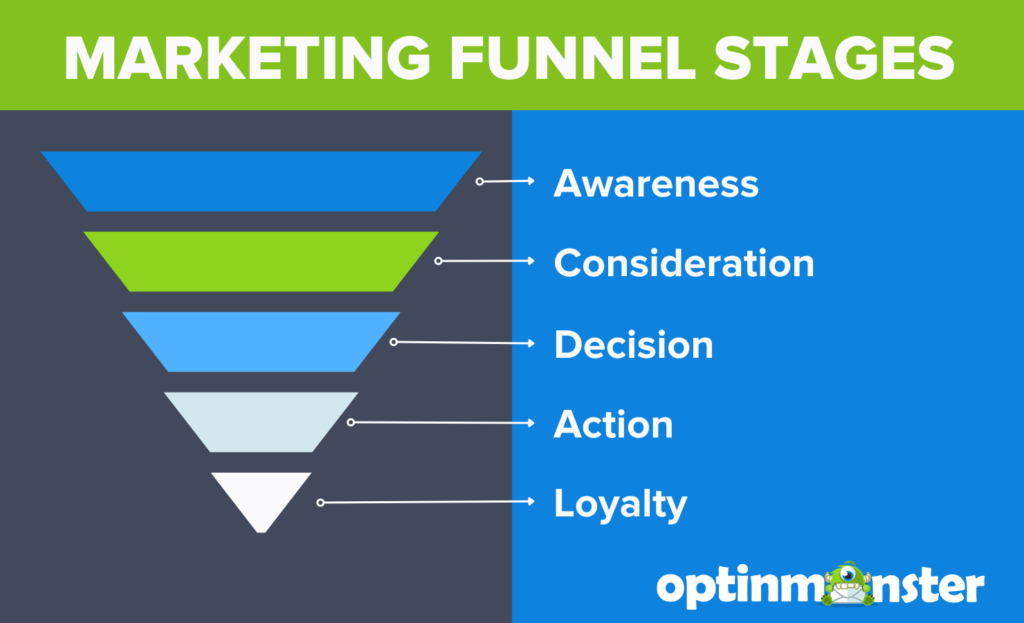
Your marketing funnel is the user’s journey from first discovering your brand to becoming a loyal customer. Eventually, you should create video content for all stages of your funnel:
- Awareness: Create brand introduction videos, explainer videos, and viral content to attract new audiences.
- Consideration: Develop product demos, testimonials, and how-to videos to educate and build trust.
- Decision: Produce case studies, customer success stories, and detailed product walkthroughs to persuade and convert.
- Action: Create limited-time offers and direct call-to-action videos to encourage immediate purchases.
- Loyalty: Improve customer retention by producing troubleshooting videos and how-to guides, as well as announcement videos for new features or products.
As you brainstorm ideas for different videos to create, determine which stage or stages each video will target. Doing so will help you understand the audience for that specific video.
5. Craft Focused Value Propositions
A value proposition is a type of sales pitch that explains the benefits of your product or service. I’m going to cover 2 types of value propositions you’ll need for your video marketing strategy: 1 for your product or service and 1 for each video itself.
Value Proposition for Your Product or Service
Before you start creating videos, you need to have a great value proposition for your product or service. That is, you need to be able to explain to viewers:
- The problem your product or service solves
- The benefits it delivers
- What makes it different than the competition
Value propositions are vital for every aspect of your marketing strategy, from writing your website copy to training your sales team.
Learn more about value propositions:
How to Write an Irresistible Value Proposition (+ 9 Examples & 4 Templates)
As an example, our value proposition here at OptinMonster is right on our homepage:
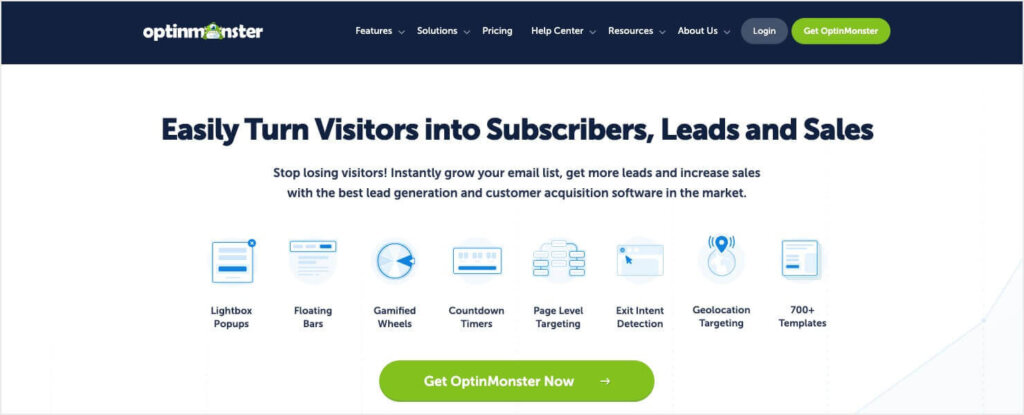
Our value proposition reads:
Easily Turn Visitors into Subscribers, Leads and Sales
Stop losing visitors! Instantly grow your email list, get more leads and increase sales with the best lead generation and customer acquisition software in the market.
Our value proposition identifies the problem (losing visitors), describes the benefits (turning visitors into subscribers, leads, and sales), and explains how our software differs from the competition (“the best . . . in the market”).
When you have a clear value proposition for your product, you’ll be better prepared to use your videos to drive sales.
Value Proposition for Your Videos
You also need value propositions for your videos themselves. These are a bit simpler, as you just need to convince your audience that your video is worth watching.
Here’s an example of one of our OptinMonster videos:
Our value proposition is right there in the video title: Boost your Mobile Marketing with 3 Proven Strategies for Mobile Lead Generation. Whether you found this video on YouTube, Facebook, or another platform, this title clearly explains the benefits of watching the video.
Value propositions help you focus your video strategy on your audience’s needs by consistently explaining how your content and products solve specific problems.
6. Stick to a Reasonable Timeline and Budget
If you look at top creators, you’ll see high-quality, complex video productions and frequent posting schedules. Those brands have huge video budgets and a team of people planning, creating, and editing their videos.
However, your posting schedule and video quality will depend on your budget and staff capacity.
When creating your timelines, try the following:
- Start small: Begin with simple videos to build confidence and refine your process. As your team gains experience, you can take on more complex productions.
- Produce in batches: Film multiple videos in one session to save time and reduce setup costs.
- Build in time for post-production: Shooting your video is just one step of production. Even simple videos often require editing, as well as adding title cards, logos graphics, text overlays, and music.
- Set milestones: Establish clear milestones and deadlines to keep the project on track and ensure timely completion.
When planning your budget, consider the following:
- Determine the resources needed, such as equipment, crew, and talent.
- Allocate funds for post-production, including editing, graphics, and music.
- Plan for distribution costs, such as paid ads or promotional campaigns.
You can always scale up your business’s video content strategy as you grow. But first, focus on making simple videos that you can do well. And at a pace that’s sustainable.
Step 7. Create & Post Your Videos
Here’s the fun part! Creating and posting videos is an exciting and rewarding process. Here are some detailed tips for creating your first marketing videos.
Planning Your Video
1. Define Your Purpose, Audience, and Message
Before you start filming, clearly define the purpose of your video and the key message you want to convey. Here are some questions to ask:
- What stage of the marketing funnel is this video part of? Again, the stages are Awareness, Consideration, Decision, Action, and Loyalty.
- Who is its target audience?
- Am I looking to educate, entertain, or promote a specific product?
- What is my goal for this specific video?
2. Storyboard Your Ideas
Create a storyboard to visualize your video’s flow. A storyboard helps you organize your ideas and plan the shots you need. It’s especially useful for videos with multiple scenes. Even if your video is just you telling your audience about your company, you should outline the flow of ideas you want to cover.
3. Write Your Script
You should always write a basic script to follow. Feel free to go off-script if you want a more conversational tone, but a script helps you stay focused and ensure you fit in all important information.
Setting Up Your Equipment
1. Choose the Right Camera
High-end cameras can produce excellent quality, but you don’t need expensive equipment to start. Many smartphones today have powerful cameras capable of shooting high-quality videos.
2. Keep It Steady
Use a tripod or stabilizer to keep your camera steady. Shaky footage is distracting and looks unprofessional. While your videos don’t need to be elaborate, they do need to be pleasant to watch.
3. Test Your Lighting
Good lighting is crucial for video quality. Natural light is great, but you can also use affordable softbox lights. Test your lighting setup to make sure your video looks clear and well-lit.
4. Focus on High-Quality Sound
For sound, consider using an external microphone to ensure clear audio, as poor sound quality can detract from even the best video content. Just like your lighting, run tests to make sure your videos sound great.
Filming Your Video
1. Frame Your Shots
Pay attention to composition. Use the rule of thirds to position your subject, and make sure the background is not cluttered or distracting.
2. Shoot Multiple Takes
Don’t be afraid to shoot multiple takes of each scene. This will give you more options when editing and ensure you capture the best possible footage.
Editing Your Video
1. Use Editing Software
You’ll need to use video editing software to cut and splice footage, add transitions, and insert text and graphics. Many user-friendly tools are available. For instance, iMovie is Apple’s free video software, exclusively for Mac and iOS users. Adobe Premiere has multiple versions for different needs: Elements for basic video editing, Pro for advanced editing features, and Rush for mobile users.
2. Add Lower Third Text and Title Cards
Incorporate names, titles, or other information in the lower third of the screen. You can also add an intro graphic and title cards to introduce segments or provide additional context.
3. Include Background Music and Sound Effects
Background music and sound effects can enhance your video’s mood and make it more engaging. Ensure you have the rights to use any music or sounds you include.
Posting Your Video
1. Optimize Your Video SEO (Search Engine Optimization)
Use relevant keywords in your video title, description, and tags to help your video get discovered. Write a compelling description and include links to your website or social media.
2. Create an Eye-Catching Thumbnail
Your video thumbnail is the image used to represent your video. It’s often the first thing viewers see, so make sure it’s attractive and accurately represents your content. Use bright, high-contrast images with readable text overlays. YouTube now allows you to A/B test your thumbnails, making it easier to optimize them for better performance.
3. Encourage Reach & Engagement
Now it’s time to get your video out into the world. Here are a few tips to get more people watching and engaging with your content:
- Engage with viewers by responding to comments and encouraging them to like and share your video.
- For your most important videos, invest in targeted paid ads to really boost your reach.
- Even if you’re focusing on 1 or 2 video platforms, share your video across your social media channels.
Step 8. Repurpose Your Video Content for Other Platforms
It takes a lot of work to create a high-quality video that targets the right audience and moves them through your funnel. But here’s the good news: once you’ve created a successful video, you can repurpose it in lots of different ways. In fact, you can get a lot of mileage out of a well-made video.
Here are just a few smart ways to repurpose your video content:
- Repost YouTube Shorts as Instagram Reels.
- Share Reels to your Instagram and Facebook Stories to gain more attention.
- Embed your videos in blog posts, documentation pages, and any other web pages that would be enhanced by video.
- Use OptinMonster to create video popups and target them to the right visitors at the right time.
- Include videos in your email marketing newsletters so your subscribers will see your best video content.
- Break up longer YouTube videos into shorter clips that can be shared across different channels.
- BONUS TIP: You can use AI tools like Opus or Vidyo to quickly create short clips from full-length videos.
Step 9. Monitor Results & Adjust Your Strategy
Your video marketing strategy should constantly evolve as you learn what does and doesn’t work for your brand. You’ll also need to keep an eye on changing marketing trends. Track key metrics such as views, shares, engagement, view time, click-through rates, and conversions. Most importantly, track whether you’ve met the goals you set in Step 1.
When you closely analyze your metrics, you can refine your video content strategy for better results.
5 Video Marketing Examples
I’ve covered the most important steps in creating a video strategy. Now, let’s look at some examples of different types of video marketing content. I’ll discuss what makes each video successful and explore how it fits into the marketing funnel.
1. 30-Second Brand Awareness Ad from Constant Contact
This video from the email marketing service Constant Contact is posted to their YouTube channel. However, its main purpose is probably as a paid advertisement for online video platforms. They’ve created a fully produced, high-quality ad that shows how their product can help small businesses meet their goals. And the cute puppies definitely help to catch attention!
This video primarily focuses on the Awareness step of the marketing funnel, as it lets people know about Constant Contact’s product and establishes a friendly brand voice.
2. How-To Video from OptinMonster
Do you sell a product that requires a learning curve or has multiple implementations? If so, then how-to videos should be an important part of your video marketing strategy.
This how-to video on creating your first OptinMonster campaign targets 2 audience segments:
- Potential customers who want to see if our product is right for them
- New customers who need help getting started
That means we can use this video for 2 different phases of our marketing funnel: Decision and Loyalty.
That’s why we feature it on our Creating Your First Campaign documentation page, which is geared toward new customers. This easy-to-follow video helps ensure that new customers can quickly start seeing the benefits of our software. And when they start seeing results, they’ll want to stay OptinMonster customers for years to come.
3. Educational Video Marketing Example from Woodworking for Mere Mortals
Steve Ramsey is a long-time YouTuber with nearly 2 million subscribers on his woodworking channel, Woodworking for Mere Mortals. For many years, his YouTube channel was his business. Eventually, changes in YouTube’s monetization made it more difficult to make a living from his channel, so he developed a paid woodworking course and a Patreon page.
He still offers free videos like the one above, which covers “18 things every beginning woodworker should know.” These videos are still monetized with YouTube ads. However, they now also drive traffic to his subscription-based offerings. He promotes his paid course at the end of the video, and the video description includes links to his Patreon and Amazon affiliate links.
This educational video nurtures users through the Consideration, Decision, and Action stages of the marketing funnel. Ramsey’s subscribers already know his brand, but this video cements his expertise in the field and encourages viewers to become paid customers.
4. Viral Video Series from BlendTec
This next video marketing example is an oldie but a goodie. In 2006, Blendtec became a YouTube favorite when they came out with their Will it Blend? series.
In the series, Blendtec’s CEO, Tom Dickson, demonstrated the power and versatility of Blendtec blenders by attempting to blend various items: Justin Bieber CDs, books, iPhones, and more.
This video series became so popular that their YouTube channel grew to 844K subscribers, and the iPad blending video above has 19 million views.
This series “blended” humor, novelty, and perfect product placement. Viewers followed for the fun videos, but they also learned just how powerful BlendTec’s products were. In the process, they were moved through the Awareness and Consideration stages of the marketing funnel.
5. Laser-Focused Webinar from OptinMonster
I haven’t talked a lot about webinars in this post, but they can be incredibly effective for generating leads and driving sales. That’s why we have an in-depth article devoted to webinar marketing:
Learn more about webinars in our guide:
Here at OptinMonster, our webinars are planned and hosted by Jeremiah Alsbrook, our Product Marketing Specialist. Above, I’ve embedded a recording of one of his webinars, which he later uploaded to YouTube. The topic of this webinar was On-Site Retargeting: How to Turn a Website Visitor’s No into an Excited YES!
This webinar focuses on the Decision, Action, and Loyalty stages of the marketing funnel. It demonstrates exactly how you can use OptinMonster to solve a specific problem, and it concludes with information about signing up or upgrading your existing plan. For those existing customers, this webinar shows yet another way they can use OptinMonster to grow their business.
I asked Jeremiah for his advice on getting the most impact from webinars. Here’s what he said:
Webinars are a dime a dozen these days, so your webinar has to provide extremely high value in order to maintain your guests’ attention. Recently, I’m finding that less is more with that value.
Instead of trying to cover 8 different features and concepts, create a laser-focused webinar that solves one specfic issue and provides practical applicaton. Don’t get suckered into thinking that a longer webinar is inherently better. We’ve seen better performance when we keep our webinars specific and concise.
Jeremiah Alsbrook, Product Marketing Specialist at OptinMonster
Make the Most of Your Video Marketing
Video marketing is a game-changer for businesses aiming to boost their lead generation and sales. By following the steps in this guide, you’ll be well on your way to creating an effective video marketing strategy that reaches your target audience and achieves your business goals.
At OptinMonster, we’ve experienced the benefits of a video firsthand. And as your videos become more and more successful, you’ll start directing more traffic to your website.
OptinMonster is the best tool available to turn those new website visitors into subscribers and customers! You can use our popups, floating bars, and other onsite marketing campaigns to generate leads and drive more sales.
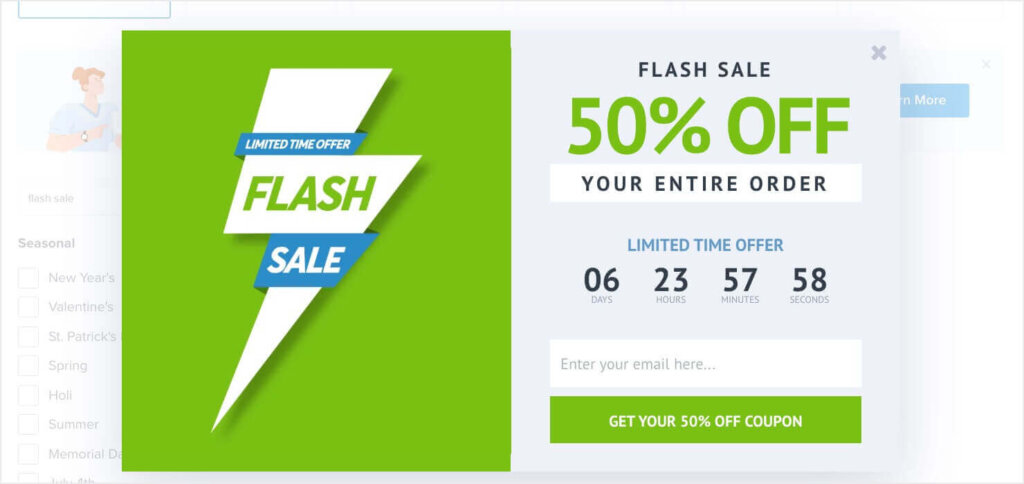
You can even embed your best video content right in your OptinMonster campaign!
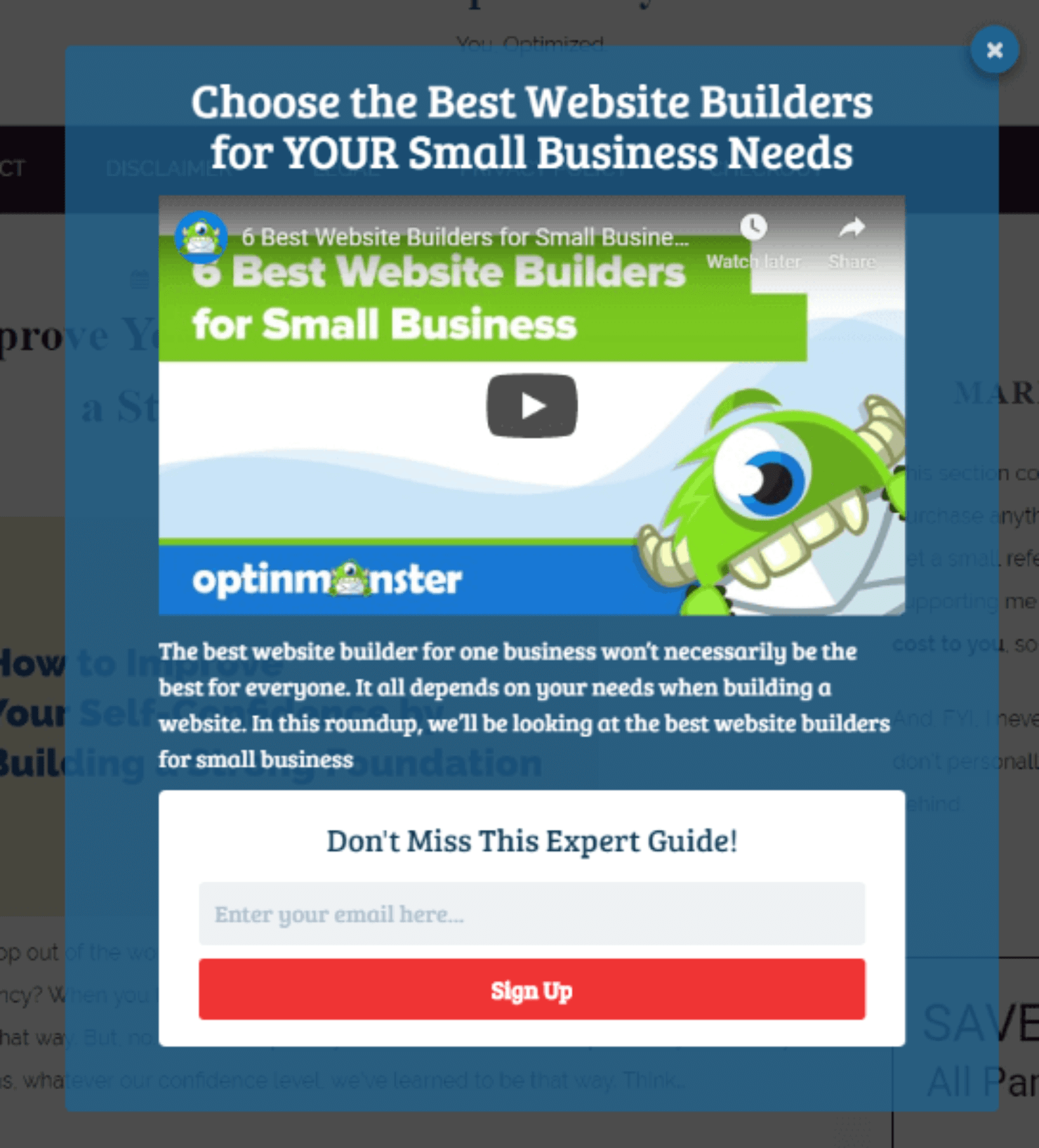
Want to get started? Sign up for OptinMonster, with our 14-day money-back guarantee.
Related Resources:

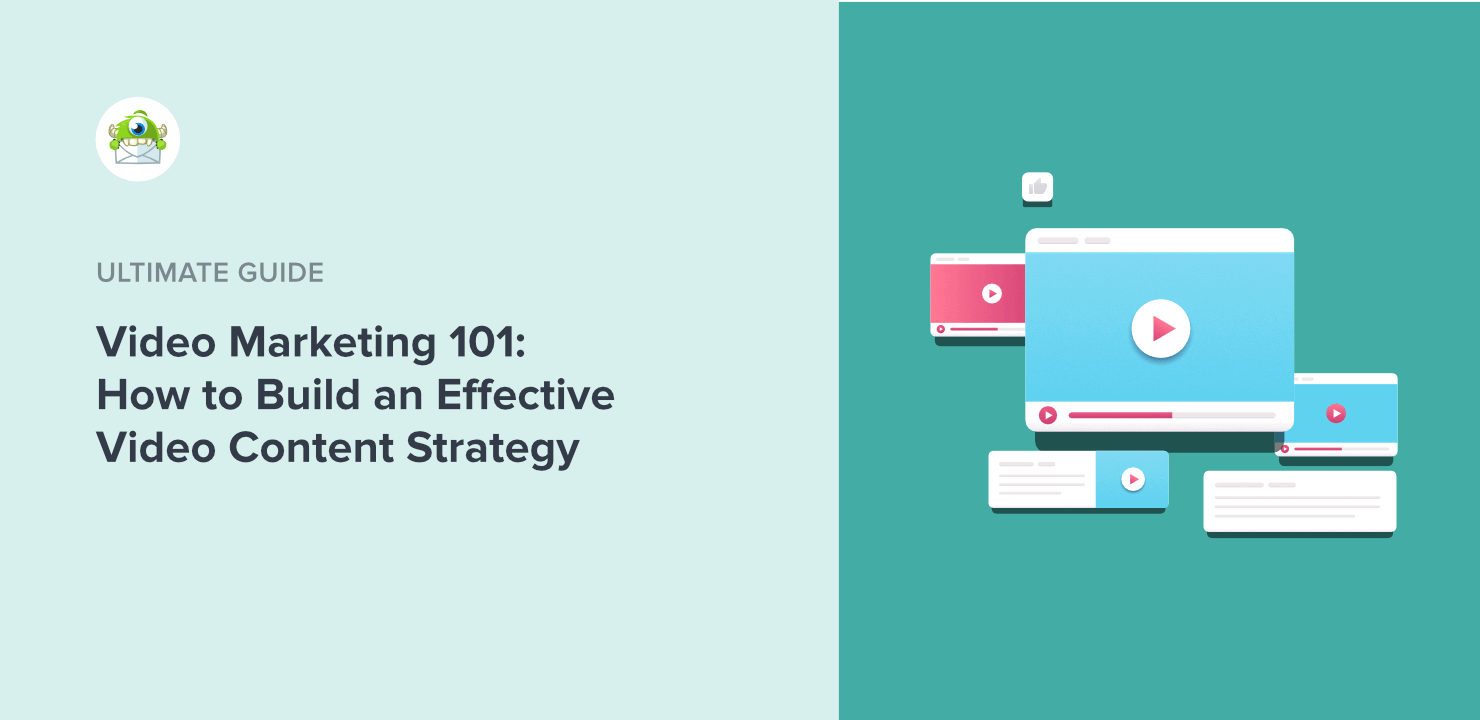









Add a Comment